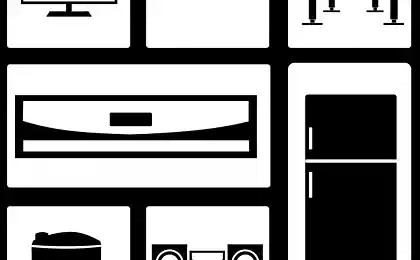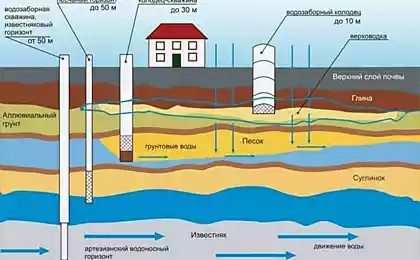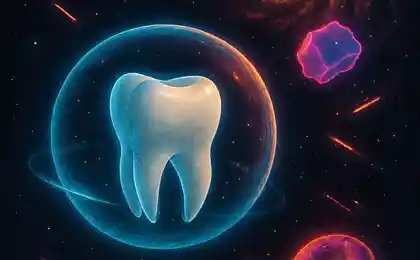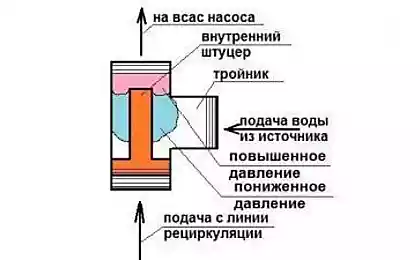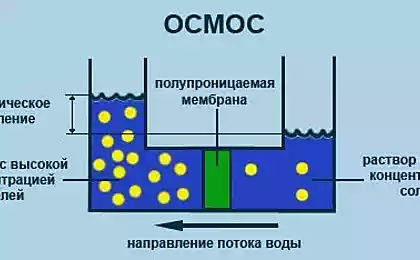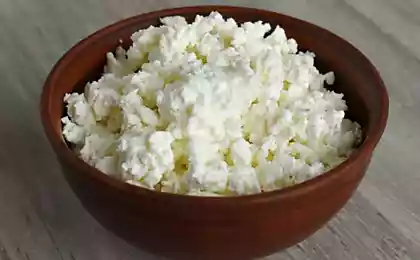1122
How to check the quality of the home water
This article concerns the quality of water in private home. Properties of water are very individual – in different areas will differ in wells, treatment system.
Decided to share some of the results of the "experiments" with water, which I spent using the meter: TDS meter, PH meter and ORP meter. Purchasing them is easy and inexpensive, and are beneficial to health.
This, of course, is not a substitute for laboratory research, but whether the fact that the key water parameters you can always measure yourself, anywhere and for any water or drink.
And very importantly, you will be able to control your water quality, including water purification systems in the house. And the properties of water from the well or wells are constantly changing over time.
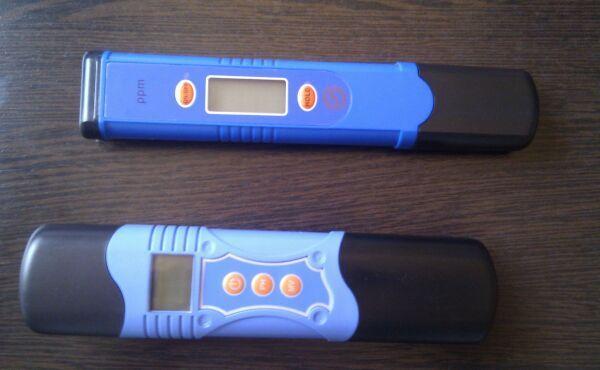
These measurements I took at the request of my wife.
The occasion was the fact that our herbal teas, brewed with different water, give a completely different taste. For example, brew the tea at home, on the water of our well – tasty, all very much. Treat them the same "welding", and they brewed it at home on tap water – the taste is different, and sometimes just missing.
I wanted to "measure feelings" and to begin, I took for comparison water:
Before describing the results will explain the meaning of measured parameters:
1. PH – a measure of activity of hydrogen ions in a solution (water), expresses its acidity. If at room temperature:
It is established that at birth man has a PH of 7.41, i.e., the liquid environment of the body is slightly alkaline. And the same slightly alkaline water is more useful to maintain the "purity" of the body.
But as a result of poor nutrition, bad water PH of a person decreases over time, and the level of 5.41 is critical, which in the body begin irreversible reactions that lead to death.
2. TDS is a measure of concentration of dissolved salts in mg/L.
In fact, even the who (world health organization) has not established a recommended level of mineralization of drinking water. Different countries have different requirements for the maximum salt level for drinking water is 500 to 1000 mg/L.
I will add that mineral water is not potable (TDS can be up to 15 g/liter and above). It was therapeutic and appointed, if necessary, to correct any abnormalities in the body.
3. ORP – oxidation-reduction potential (redox-potential), mV – a measure of the ability of a chemical to attach electrons. ORP of the human body: from -70 to -200 mV, and normal water — is almost always above zero, often from +100 to + 400. At ORP is affected by water temperature, PH, amount of dissolved oxygen.
When drinking water penetrates the tissues of our body, it takes away electrons from cells, which consist mainly of water. As a result the biological structure of the organism are subjected to oxidation and progressive degradation.
The body always tries to return the potential back to a result, it spends energy, wears out, gets older, vital organs lose their function.
But if entering the body drinking water has ORP value close to the ORP of the internal environment of the human body, the electrical potential of cell membranes is not consumed, and water is better absorbed.
Ie the lower the ORP of water is, the healthier it is for us. But if the drinking water has ORP more negative than that of the human body, it begins to feed its energy, which is easily used by cells. Most likely, in folk tales it is water with a negative ORP value was called "living water."
And now here is the results of my measurements:
Source of waterPHORPTDS (salt) store of 6.27 238 103 City water of 7.61 202 322 Country summer water supply of 6.52 224 95 From the spring of 7.05 232 462 out Of our wells 7,31-7,56 11-118 197-240
The spread according to our water happened because I measured them many times at different times, the result was a range.
What's interesting – AFP fresh, cold water poured from the well – below occasionally reached 11-17, when the water will stand for several hours or if the boil becomes greater than 100.
And, if you're interested, publish the results of measurements of different "brews" on our water:
TeasPHORPTDS (salt) Water before welding 7,55 110 221 Leaves of currant and mint 7,52 128 383 black Tea loose leaf 6,91 187 462 Linden Flowers 7,56 127 320 Mountain honey with water of 5.93 260 205 St. John's Wort To 6.85 146 345 Daisy 6,43 193 799 oak Bark 7,18 188 219
After these measurements, I confirmed some thoughts and concluded:
Our water healthier (and tastier) to drink fresh and cold. It is not "alive" like in the fairy tales, but, compared to other available sources, closer to the "water of longevity". The similarity of the properties of water in bottles in the store and in summer the water inspired the idea, not from a single source they come from. Compared to them even the tap water looked very good for PH and ORP, but was tougher and "nevkusno" because of the salts. Water from springs is not always better the same water, everything should be measured. Often becomes clear, and on how the water is "absorbed" while drinking it. Herbs and teas added to the water new properties, changing PH, ORP, the concentration of salts. And not always as we would like. I once upon a time virtually stopped drinking black tea and switched to water or herbal teas, and only now saw why I did it. Probably the body suggested that I drank is "dead tea." And, as an assumption, the idea that the water which we drink, can affect which compounds of the drinks on it are useful and which are harmful. Ie if water with a low PH to brew tea that it will further lower, and to drink it every day – age approach rather. And if on the contrary, brew some grass, which will raise PH and will not have unnecessary actions, they may water it will be better and health will last longer.
Still interesting to see how some herbs, such as chamomile, significantly (4 times!) increase the concentration of salts.
Also interesting: Appliances whirlpool: Choose equipment
How to make water in the well safe
In fact, the topic is vast and deep, and the scope for experimentation is huge. Perhaps there will be new more detailed measurements and new insights. In any case, let me add that I am not a chemist or expert on the water.published
Author: Eugene Rashtchian
P. S. And remember, only by changing their consumption — together we change the world! ©
Join us in Facebook , Vkontakte, Odnoklassniki
Source: vsvoem-dome.ru/kak-samostoyatel-no-proverit-kachestvo-domashnej-vody/
Decided to share some of the results of the "experiments" with water, which I spent using the meter: TDS meter, PH meter and ORP meter. Purchasing them is easy and inexpensive, and are beneficial to health.
This, of course, is not a substitute for laboratory research, but whether the fact that the key water parameters you can always measure yourself, anywhere and for any water or drink.
And very importantly, you will be able to control your water quality, including water purification systems in the house. And the properties of water from the well or wells are constantly changing over time.

These measurements I took at the request of my wife.
The occasion was the fact that our herbal teas, brewed with different water, give a completely different taste. For example, brew the tea at home, on the water of our well – tasty, all very much. Treat them the same "welding", and they brewed it at home on tap water – the taste is different, and sometimes just missing.
I wanted to "measure feelings" and to begin, I took for comparison water:
- our wells
- urban water supply — apartment of friends,
- bottled from the store
- country summer water supply,
- a spring nearby.
Before describing the results will explain the meaning of measured parameters:
1. PH – a measure of activity of hydrogen ions in a solution (water), expresses its acidity. If at room temperature:
- PH>7, the medium is considered to be alkaline,
- PH<7 – acidic
- PH=7 — neutral.
It is established that at birth man has a PH of 7.41, i.e., the liquid environment of the body is slightly alkaline. And the same slightly alkaline water is more useful to maintain the "purity" of the body.
But as a result of poor nutrition, bad water PH of a person decreases over time, and the level of 5.41 is critical, which in the body begin irreversible reactions that lead to death.
2. TDS is a measure of concentration of dissolved salts in mg/L.
- 0-50 – water after the reverse osmosis, you could say distilled,
- 50-100 – pure brackish water,
- 100-300 – conventional water (most wells, springs, bottled),
- 300-500 – water from the reservoir,
- More than 500 technical water.
In fact, even the who (world health organization) has not established a recommended level of mineralization of drinking water. Different countries have different requirements for the maximum salt level for drinking water is 500 to 1000 mg/L.
I will add that mineral water is not potable (TDS can be up to 15 g/liter and above). It was therapeutic and appointed, if necessary, to correct any abnormalities in the body.
3. ORP – oxidation-reduction potential (redox-potential), mV – a measure of the ability of a chemical to attach electrons. ORP of the human body: from -70 to -200 mV, and normal water — is almost always above zero, often from +100 to + 400. At ORP is affected by water temperature, PH, amount of dissolved oxygen.
When drinking water penetrates the tissues of our body, it takes away electrons from cells, which consist mainly of water. As a result the biological structure of the organism are subjected to oxidation and progressive degradation.
The body always tries to return the potential back to a result, it spends energy, wears out, gets older, vital organs lose their function.
But if entering the body drinking water has ORP value close to the ORP of the internal environment of the human body, the electrical potential of cell membranes is not consumed, and water is better absorbed.
Ie the lower the ORP of water is, the healthier it is for us. But if the drinking water has ORP more negative than that of the human body, it begins to feed its energy, which is easily used by cells. Most likely, in folk tales it is water with a negative ORP value was called "living water."
And now here is the results of my measurements:
Source of waterPHORPTDS (salt) store of 6.27 238 103 City water of 7.61 202 322 Country summer water supply of 6.52 224 95 From the spring of 7.05 232 462 out Of our wells 7,31-7,56 11-118 197-240
The spread according to our water happened because I measured them many times at different times, the result was a range.
What's interesting – AFP fresh, cold water poured from the well – below occasionally reached 11-17, when the water will stand for several hours or if the boil becomes greater than 100.
And, if you're interested, publish the results of measurements of different "brews" on our water:
TeasPHORPTDS (salt) Water before welding 7,55 110 221 Leaves of currant and mint 7,52 128 383 black Tea loose leaf 6,91 187 462 Linden Flowers 7,56 127 320 Mountain honey with water of 5.93 260 205 St. John's Wort To 6.85 146 345 Daisy 6,43 193 799 oak Bark 7,18 188 219
After these measurements, I confirmed some thoughts and concluded:
Our water healthier (and tastier) to drink fresh and cold. It is not "alive" like in the fairy tales, but, compared to other available sources, closer to the "water of longevity". The similarity of the properties of water in bottles in the store and in summer the water inspired the idea, not from a single source they come from. Compared to them even the tap water looked very good for PH and ORP, but was tougher and "nevkusno" because of the salts. Water from springs is not always better the same water, everything should be measured. Often becomes clear, and on how the water is "absorbed" while drinking it. Herbs and teas added to the water new properties, changing PH, ORP, the concentration of salts. And not always as we would like. I once upon a time virtually stopped drinking black tea and switched to water or herbal teas, and only now saw why I did it. Probably the body suggested that I drank is "dead tea." And, as an assumption, the idea that the water which we drink, can affect which compounds of the drinks on it are useful and which are harmful. Ie if water with a low PH to brew tea that it will further lower, and to drink it every day – age approach rather. And if on the contrary, brew some grass, which will raise PH and will not have unnecessary actions, they may water it will be better and health will last longer.
Still interesting to see how some herbs, such as chamomile, significantly (4 times!) increase the concentration of salts.
Also interesting: Appliances whirlpool: Choose equipment
How to make water in the well safe
In fact, the topic is vast and deep, and the scope for experimentation is huge. Perhaps there will be new more detailed measurements and new insights. In any case, let me add that I am not a chemist or expert on the water.published
Author: Eugene Rashtchian
P. S. And remember, only by changing their consumption — together we change the world! ©
Join us in Facebook , Vkontakte, Odnoklassniki
Source: vsvoem-dome.ru/kak-samostoyatel-no-proverit-kachestvo-domashnej-vody/





